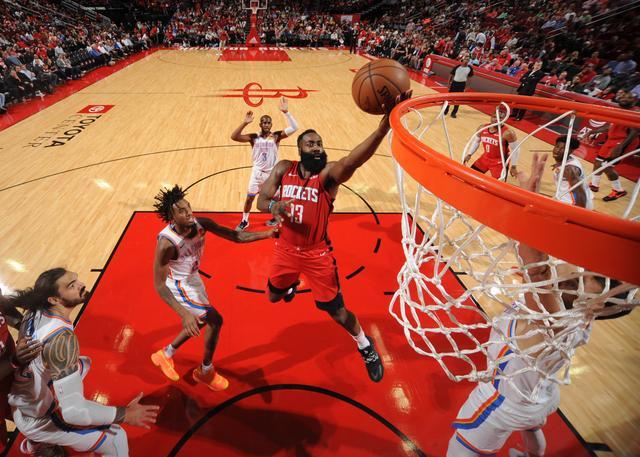爱游戏亚洲官网-联盟历史第一人诺维茨基退役告别球场
原文标题:How the Euro Became Decoupled From the Price of Assets
作者:本.艾蒙 来源:Bloomberg
解盘侠说:
今年是欧洲的“大选年”:3月荷兰大选,4月法国大选,9月德国大选,从年初到年尾贯穿一整年的选举热将煮沸整个欧洲。政局的变化首当其冲作用于经济,被贴上政治标签后的经济又重复表现着某种典型的时代特征。2012年的欧洲债务危机,是否将历史重演?欧洲的投资者们,在风险与机遇的双重考验下,又该如何在货币和资产这杆天平上做出明智的选择?
最近几周以来,对货币价值的修辞似乎变得政治化。这在欧洲显得尤其突出,欧洲的债券市场和欧元之间出现了显著的分歧。今年荷兰、法国和德国将进入选举年,这可能导致众多民粹主义政党进入议会,对于投资者而言,欧元和欧洲资产估值之间的脱钩会带来很大的影响。
第一个显着差异是欧元现货汇率和外围债券利差之间的差异。在2010年至2012年的欧债危机期间,欧元下跌与债券利差扩大之间的关系总是非常接近。这是由于担心“重新分配风险”而退出欧洲债券的外国投资者的资本外流以及欧元兑换成当地货币(如意大利里拉或希腊德拉克马)的结果。

如今,这一关系已经脱钩(见图1)。其中一个原因是2016年12月欧洲央行假定“缩减购债”(tapering),从而打压欧元汇价。而美国总统特朗普贸易顾问皮特·纳瓦罗在最近的言论中指出“欧元汇率被严重低估”,使得对欧元的打压进一步升温。债权市场面临的压力很明显,意大利、法国与德国之间的利差已经扩大至四年高位。利差扩大的原因在于欧洲央行不合时宜的提出“缩减购债”计划,同时玛丽娜·勒庞(Marine Le Pen)承诺法国将退欧,以及对意大利不良贷款问题不断扩大的担忧。但是,不同于2012年和2015年,当希腊新政府威胁退出货币联盟时,欧元所面临的改革风险中并没有来源于意大利或法国。
图1:债券利差和欧元
第二个值得注意的差异是明显的“外汇波动率期限结构”。这种波动是由不同的期限所表达的。当荷兰和法国大选升温时,欧元的波动率期限结构在距今两到四个月左右时出现了一个“驼峰”。另一方面,欧元的远期利率结构表明欧元汇率将至少稳定一年。这意味着即使选举结果对欧元不利,市场传递到欧元上的风险溢价也不会很大。尽管民粹主义对汇率波动造成的风险更大。
图2:欧元和汇率波动期限结构
法国和意大利的经济和债券市场结合起来(4万亿欧元)相当于希腊经济的20倍。因此意大利和法国的民粹主义多数派政府的极端主义只要有任何重大变化,不仅将施压于债券息差,也会对欧元汇率产生影响。
这一观点可能最明显表现在实际利率上。如图3所示,2012年初的实际利率是负的,而欧元却处在高位。而希腊债务重组和紧随其后的选举,以及春天发生的西班牙银行危机,都恰好发生在那个时候。当前虽然欧元回落到一个更低的价格,但结合同样存在:欧元走强而实际利率下跌。今年选举所带来的民粹主义风险将可能会导致实际利率上升而欧元下滑,而今年会比2012年的情况更糟糕。债券市场已经在警惕这种可能性,但欧元没有。投资者在对欧洲资产进行评估时应该将汇率风险溢价折算在内。如果运作得当,后荷兰时代和法国选举潜在的混乱可能会给欧洲资产带来比现在更有吸引力的估值。
图3:实际利率
注:作者本.艾蒙,是领英(Intellectus Partners LLC)首席经济学家和信贷组合管理主管。本文代表个人观点。
原文:
How the Euro Became Decoupled From the Price of Assets
ByBen Emons
In recent weeks, rhetoric seems to have politicized the valuation of currencies. This is especially true in Europe, which has experienced a notable divergence between the performance of the bond market and that of the euro. In a year of elections in the Netherlands, France and Germany that could usher in a large sweep of populist parties to parliaments, the decoupling between the euro and European asset valuations has several implications for investors.
The first notable difference is between the euro spot exchange rate and peripheral bond spreads. During the European debt crisis from 2010 to 2012, the relationship between the decline of the euro and widening bond spreads was always very close. This was the result of capital outflows from foreign investors who exited European bonds out of fear of “redenomination risk,” as well as the conversion of euro currency back to local currency (such as Italian lira or Greek drachma).
Today, this relationship is decoupled (Fig. 1). One reason is the European Central Bank’s presumptive “tapering” announced in December 2016 that put a bid under the euro. That bid was further cemented by recent commentary by U.S. President Donald Trump’s trade adviser Peter Navarro pointing to a “grossly undervalued euro exchange rate.” The bond market faces pressure that is visible in the widening of Italian and French spreads to Germany to four-year highs. The widening of spreads has been caused by ill-timed ECB tapering of quantitative easing, along with Marine Le Pen’s pledge to remove France from the euro and growing concerns of a spreading non-performing loan problem in Italy. But unlike in 2012 and 2015, when Greece’s new government threatened to exit the monetary union, the euro is not facing a redenomination risk stemming from Italy or France.
FIG. 1: BOND SPREADS AND THE EURO.
BLOOMBERG

THE SECOND NOTABLE DIFFERENCE IS APPARENT IN THE “TERM STRUCTURE OF FX VOLATILITY." THIS IS VOLATILITY EXPRESSED BY DIFFERENT MATURITIES. THE EURO SHOWS A “HUMP” IN THE VOLATILITY TERM STRUCTURE AROUND TWO TO FOUR MONTHS FROM TODAY, WHEN THE DUTCH AND FRENCH ELECTIONS HEAT UP. ON THE OTHER HAND, THE TERM STRUCTURE OF FORWARD RATES FOR EURO STRUCTURE OF FORWARD RATES SUGGESTS THE CURRENCY WILL BE STABLE TO STRONGER FOR AT LEAST A YEAR. THAT MEANS THE MARKET HAS ASSIGNED LITTLE RISK PREMIUM TO THE EURO IN TERMS OF AN ADVERSE ELECTION OUTCOME, EVEN THOUGH CURRENCY VOLATILITY DISCOUNTS A GREATER RISK OF A POPULIST UPSET.
FIG. 2: EURO AND VOLATILITY TERM STRUCTURE
BLOOMBERG
The French and Italian economies and bond markets combined are 20 times larger (4 trillion euros) than the Greek economy. Thus any significant change in the Italian and French political spectrum in terms of a populist majority government would not only pressure bond spreads but also the euro.
That view might be most visibly expressed in real interest rates. Fig. 3 shows early 2012 real interest rates were negative and the euro was trading at high levels. This was immediately before the Greek debt restructuring and subsequent elections and the Spanish banking troubles in the spring. Today, although the euro trades at a lower level, the same combination exists: a strong euro while real rates are very negative. Any risk of a populist outcome in this year’s elections may result in a worse combination of rising real interest rates and a falling euro as in 2012. The bond market is already on alert for this possibility, but the euro is not. Investors should discount a great currency risk premium when valuing European assets. If done properly, post-Dutch and French elections potential dislocations may offer more attractive European valuations than today.
SOURCE: BLOOMBERG. RATE IS CALCULATED AS THE WEIGHTED AVERAGE OF GERMAN, FRENCH, ITALIAN AND SPANISH TWO-YEAR YIELDS ADJUSTED FOR HEADLINE INFLATION.
FIG. 3: REAL INTEREST RATE
BEN EMONS
Ben Emons is chief economist and head of credit portfolio management at Intellectus Partners LLC. The opinions expressed are his own.




评论留言
暂时没有留言!